“I define connection as the energy that exists between people when they feel seen, heard, and valued; when they can give and receive without judgment; and when they derive sustenance and strength from the relationship.”
― Brené Brown
Connection is to humans what water is to fish; a key to our existence and a cornerstone for our behavior. We are social beings and from infancy we make decisions and set goals in response to our social framework. In community, we make interpretations, then decisions about ourselves, about men, women, life and more, and we adopt beliefs and strategies based on these decisions. Our connections with others shape our private logic and our external and internal worldviews. In M. Scott Peck’s book A Different Drum, he identifies the following four stages that lead to real community: pseudo-community, chaos, empty and true community.
Pseudo-Community
Pseudo-Community is taught by well-meaning parents through comments like: “Say you’re sorry” (when we’re not), “Don’t ask, that’s selfish” (when we have desires), and “You mustn’t say that, you’ll hurt feelings” (when we have valid and self-respecting opinions). Teaching people to be respectful, civilized and caring is necessary. The difference in pseudo-community is that the top priority is maintaining peace at all costs and avoiding conflict. People are required to hide feelings of anger, hatred, jealousy, desire, hurt, fear, inadequacy; anything disruptive and unpleasant.
As chaos begins to surface (and it will), we generally assume that we are the “weak link”. We worry we are inadequate and not up to the important life task of cooperation. This impression is usually supported by others and our discomfort increases. In reaction, we work even harder to present a pseudo-face to the world, perpetuating a complex system of managing our relationships and ourselves that is not holistic, realistic or effective
When I betray me, I betray you
Over time, we waste precious energy thinking thoughts of attack and self-defense (to counter self-attack), blame (to relieve self-blame) and do everything possible (addictions) to repress feelings that don’t fit into our pseudo-community picture. In an attempt to survive internal disconnects and self-betrayal, we are driven to inflate our own virtues, deflate those of others and act superior to cover our insecurities. As harmful as all this is to our relationships, the greatest cost is disconnection within our selves.
Chaos
Most people do not realize that moving from pseudo-community into chaos is a huge step forward. If we did, more of us would open to chaos and we’d stop avoiding discomfort. This would actually reduce the epidemic anxiety, breakdowns and addictions within our society. Our avoidance of chaos keeps us stuck.
What does it look like to consciously open to chaos? One example from my own life is a program I created on dismantling bullying systems. I open the workshop by introducing myself as a bully. It’s interesting to notice the chaos in myself and on the faces of the participants; we are all amused, relieved and also uncomfortable. Next, I describe in detail how I am a victim, then a passive bystander, and lastly, a peacemaker. Intuitively, I know that if I am to have an impact on bullying I must first model willingness to move through chaos.
Chaos is always first experienced and avoided or faced within. I recently had a client who described her husband as depressed. She shared how she had been trying to get him to read self-help books, look for solutions, and get counseling. I instructed her to cease everything except to open to the chaotic feelings within her whenever she was with him or thought about his depression. She felt relief at this idea, appreciating the permission and encouragement to enter chaos; her own fear, helplessness and despair. Doing this helped re-center her, and as a result, her husband quickly began to face his own internal chaos more directly and productively as well.
Empty
Once we get comfortable facing and allowing chaos, our next step is to empty ourselves of almost all thoughts and practices that served us so well in pseudo-community. This letting go often feels like a death. In empty we let go of our judgments, expectations, goals, even our hopes and dreams. We let go of many life-long practices, especially living in the past and the future. In empty, we step into un-charted territory and it’s as if our known world is turned upside-down. We get out of our own way, stop trying to prove ourselves and we make room for others.
True Community
True community is what happens when we have moved completely out of protection, fear and judgment. True community is unconditional loving connection, first with ourselves and then with others. From this new relaxed state of being, the magic of authentic connection is made and solutions and trust come forth naturally and creatively. The following story comes from a journal describing a South African tribe and is just one great example of true community:
“In the Babemba tribe, when a person acts irresponsible or unjustly, he or she is placed in the center of the village. All work ceases. The entire village gathers around and each person of every age begins, one at a time, to tell ALL THE GOOD THINGS the one in the center ever did in his or her lifetime. Every incident, every experience is recounted. All positive attributes, good deeds, strengths, and acts of kindness are recited carefully and at length. No one is permitted to fabricate, exaggerate or be facetious. The tribal ceremony often lasts several days, not ceasing until everyone is drained of every positive comment. At the end, the tribal circle is broken, a joyous celebration takes place, and the person is symbolically welcomed back into the tribe. Necessity for such ceremonies is rare.”
What would it take to create a culture that is this deeply committed to true community? Most of us in Western civilization and in many other parts of the world do not recognize the value of community; we believe that anything other than a dog-eat-dog world is ridiculously idealistic, impractical, and impossible to create. If we fully recognized that the root of our major problems are related to a culture of our own making, would we be open to moving through chaos (and empty) to create authentic connection and true community?
As published nationally in the column Emotional Intelligence in the Women’s Journals, Apr/May 2006




